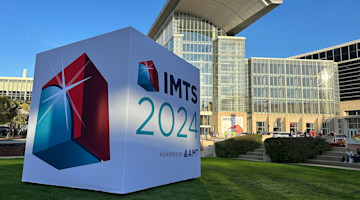Most of us would assume that the entire world needs the manufacturing technology products we supply to the U.S. market. While that may be true, different markets may have different ways of buying those products. In my many years in the global market, I learned that not all markets are created equal. Choosing the right alignment between the market’s needs and what I had to offer made the difference between success and failure. I found out, sometimes the hard way, that it was important to understand three things:
How big is the market for my product, and how is that demand currently being satisfied? There must be a minimum potential demand for your product so that you can afford the support needed to keep your customers satisfied. If the demand is already being satisfied through domestic or other foreign suppliers, the value added that you bring to the market must be worthwhile for your customer to make the switch.
How will my product directly benefit my customers in that market, considering their eventual limitations in applying my technology in their manufacturing plant? The environment in which your equipment will operate may influence its functionality and productivity. Think in terms of operators’ skills, maintenance, programming, setup of the equipment, and so on.
What will I have to do to acquire a major chunk of that market, and do I have the sustainable capacity to support that demand? A customer who is not supported before, during, and after the order is placed is a customer lost.
If you feel comfortable with your replies to those questions, chances are that this may become an attractive market for your product. Answering those questions may sometimes be a subjective task, and researching the right sources of information will provide you with the qualitative and quantitative answers that allow you to make the right decisions.
As an example, my experience was that certain countries valued the equipment much more than others, and they strictly followed the recommended maintenance instructions, which subsequently extended the life of the equipment, kept its accuracy, and didn’t require emergency service calls.
I always tried to find answers to the above questions by:
Visiting potential customers at their plants and talking to them directly. It is amazing how much you can find out when you are in contact with the right people.
Keeping close contact with the local representative. They are the best interpreters of the anxieties of your customers and have a responsibility to keep communications open beyond the selling process.
Consulting with AMT Global Services to get a reading on what one can expect from each market that you set your sights upon.
This is the first in a series of articles dedicated to sharing strategies for entering and conducting manufacturing technology business in international markets.
Mario C. Winterstein, CEO at International Business Development Group, Inc., writes “Mario’s Global Beat” for AMT. Fluent in six languages, Winterstein is a business and international trade strategist in marketing, sales, and service support management for the metal-working industry. His career spans 34 years in planning, implementing, and managing international marketing, sales, service organizations, and starting “green-field” manufacturing plants. He is a member of the D.C.-Virginia District Export Council (DEC) – duly appointed by the U.S. Secretary of Commerce. He lives and works in Herndon, Virginia.
If you have any comments, concerns, or questions, please contact Mario Winterstein at mwinterstein@ibdgi.com.






